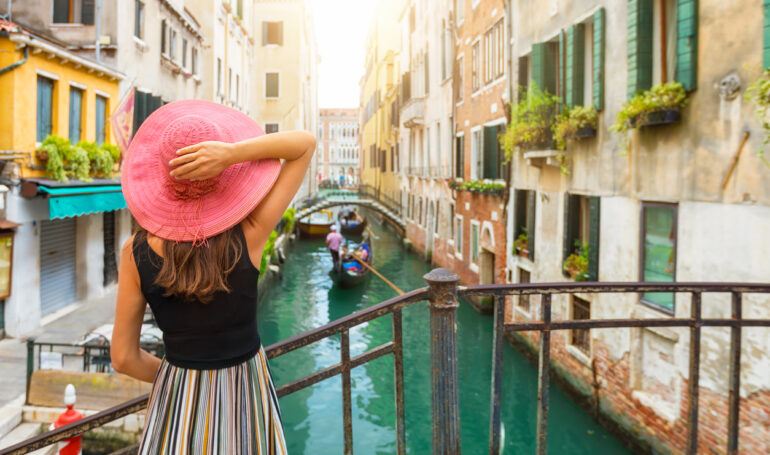
Navigating Traveling to Italy in the Summer
Italy in the summer is a dream destination for many travelers. With its breathtaking coastlines, historic cities, world-class cuisine, and lively festivals, it’s no surprise that millions of people flock to the country during the months of June, July and August. However, navigating a summer trip to Italy requires a bit of strategy. From managing the heat and crowds to booking transportation and accommodations wisely, here’s how to make the most of your Italian summer adventure.
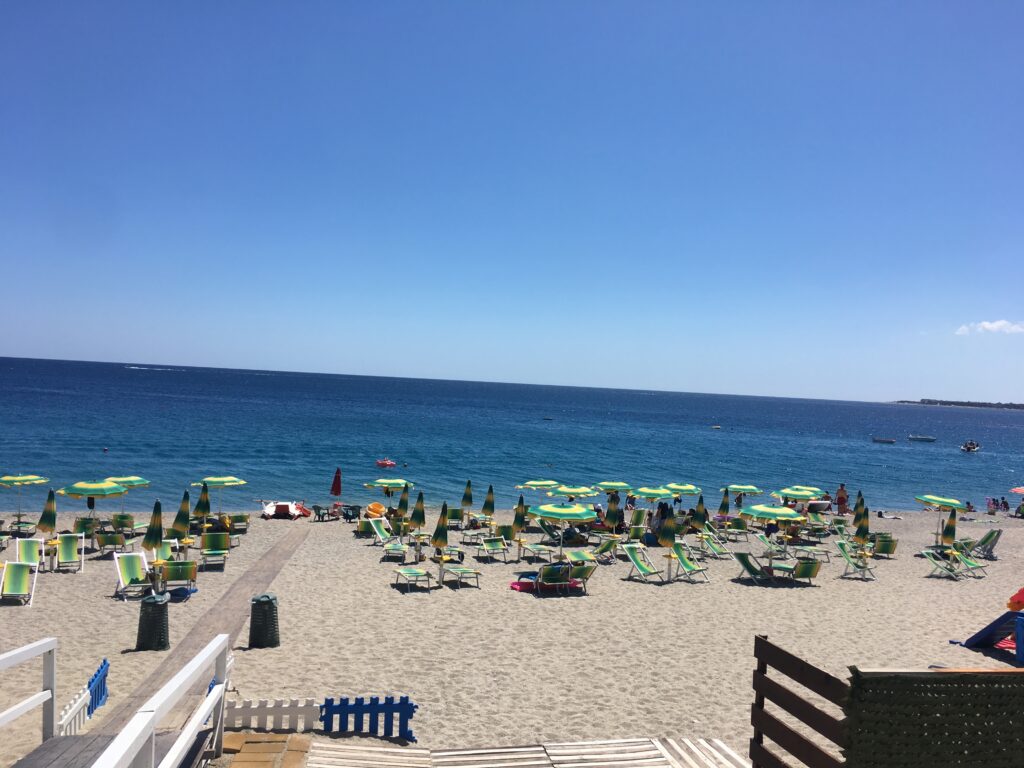
Picture Credit: Lazy Italian Culinary Adventures.
1. Plan Ahead — Way Ahead
Summer is peak tourist season in Italy, so one of the most important tips is to book everything well in advance. This includes:
- Flights: Booking 2–4 months in advance can often get you better rates.
- Accommodation: Major cities like Rome, Venice, and Florence fill up quickly. For the Amalfi Coast or Cinque Terre, aim to book even earlier—6 months ahead is ideal.
- Train Tickets: For high-speed trains (Trenitalia, Italo), booking early online can save money and ensure availability.
- Museum and Attraction Tickets: Skip-the-line tickets for places like the Colosseum, Vatican Museums, and Uffizi Gallery are essential. Purchase online directly from official websites when possible.
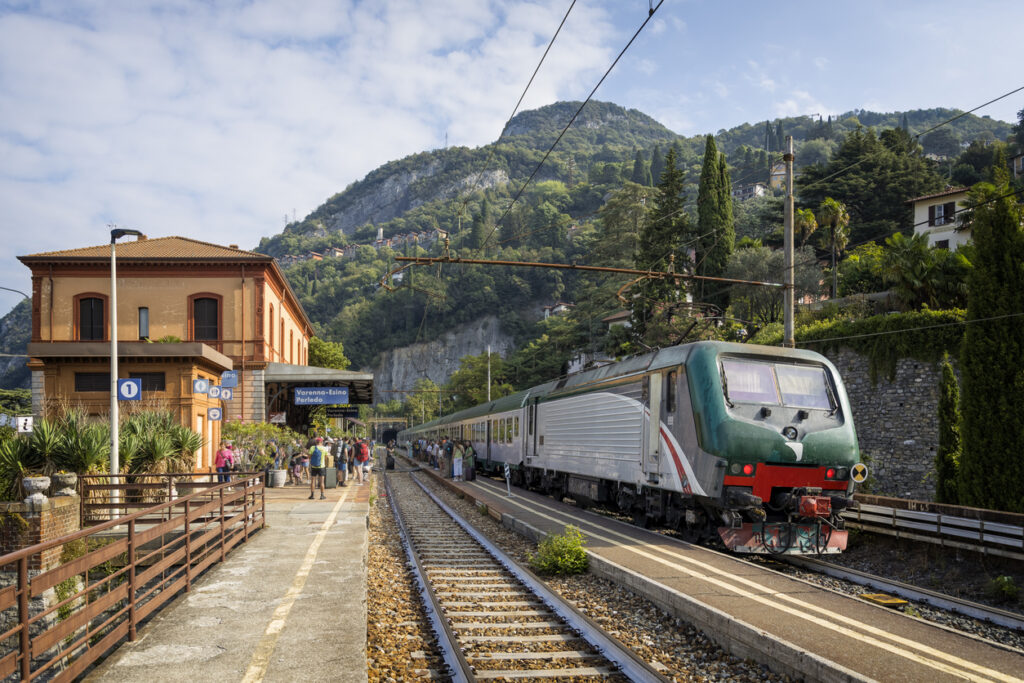
Picture Credit: ewg3D via iStock.
2. Beat the Heat
Italian summers are hot, especially in the southern regions. Temperatures can soar above 35°C (95°F) in places like Rome, Naples, and Sicily.
How to Stay Cool:
- Start Your Day Early: Visit outdoor attractions in the morning to avoid midday heat.
- Siesta Time: Many locals take a break from about 1:00 PM to 4:00 PM. Use this time to relax indoors or enjoy a leisurely lunch.
- Hydrate Frequently: Carry a reusable water bottle. Rome and other cities have public fountains with safe drinking water.
- Dress Appropriately: Lightweight, breathable fabrics like cotton and linen are key. Don’t forget a hat and sunglasses.
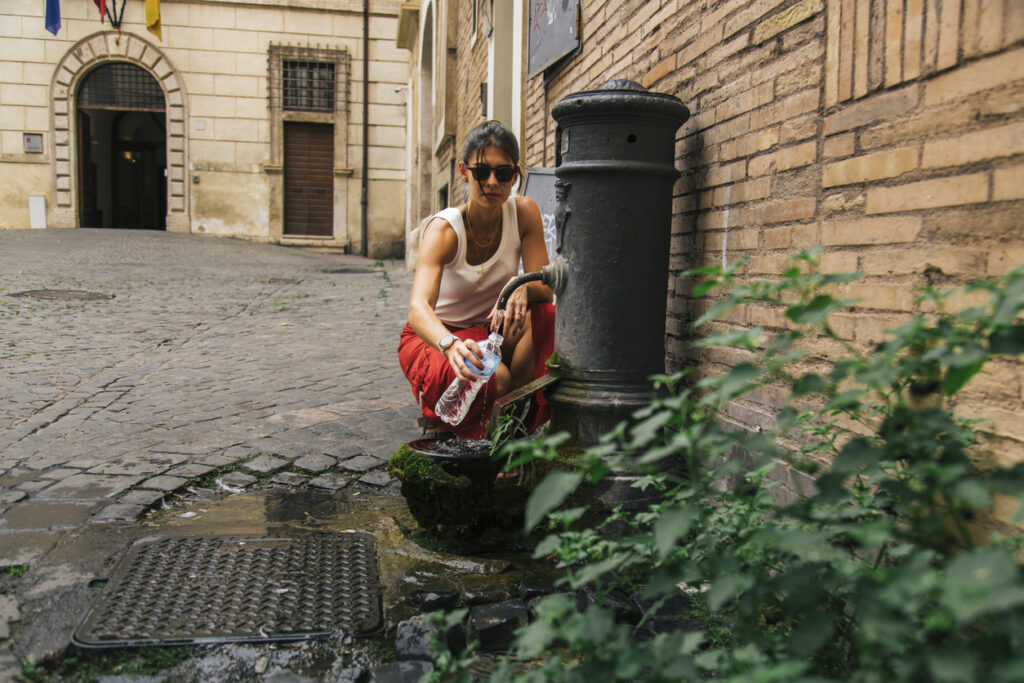
Picture Credit: Gabriel Melo.
3. Know Your Transportation Options
Getting around Italy is relatively easy with a bit of prep. The country offers a comprehensive transportation network.
Trains
Italy’s high-speed trains are efficient and comfortable. Use them for travel between major cities (e.g., Rome to Florence, Milan to Venice).
- Buy Tickets in Advance to save money.
- Regional Trains are slower but serve smaller towns and are great for exploring the countryside.
Buses
In smaller towns or for scenic routes (e.g., Amalfi Coast), buses may be your best bet. Be aware that:
- Buses may be crowded in summer.
- Schedules can be irregular, especially on weekends or holidays.
Rental Cars
If you’re exploring rural areas like Tuscany or Sicily, renting a car offers flexibility. But:
- Driving in cities is discouraged due to limited traffic zones (ZTLs), tight roads, and scarce parking.
- Understand Italian road signs and rules before hitting the road.
- Don’t forget your International Driver’s Permit!
4. Manage the Crowds
Italy’s beauty is no secret, and places like Venice or Florence can feel overrun in summer.
Tips to Avoid the Crowds:
- Visit Lesser-Known Towns: Swap Pisa for Lucca, or Amalfi for Atrani.
- Travel Midweek: Tuesdays and Wednesdays tend to be quieter than weekends.
- Stay Overnight: Tourists often do day trips. Spend the night in places like Venice or Cinque Terre to enjoy early mornings and late evenings with fewer people.
- Use Early or Late Entry Times: Many museums and churches offer evening hours one or two days a week.
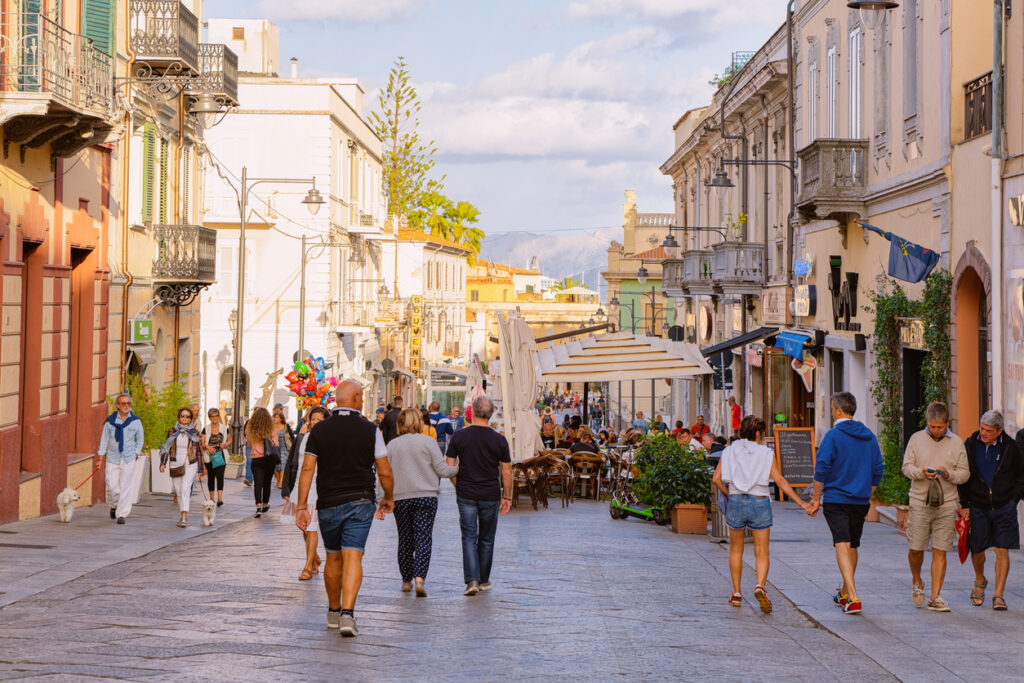
Picture Credit: Roman Babakin.
5. Understand Local Etiquette
Cultural respect goes a long way. While Italians are generally warm and welcoming, here are a few etiquette tips:
- Greetings: A simple “Buongiorno” (good morning) or “Buonasera” (good evening) when entering shops or restaurants is appreciated.
- Dress Modestly for Churches: Shoulders and knees should be covered.
- Dining: Meal times are later than in many countries. Lunch is around 1:00–2:00 PM; dinner rarely starts before 8:00 PM.
- Tipping: Always appreciated. Leaving some euros or rounding up the bill is common.
6. Savor the Seasonal Flavors
One of the best parts of an Italian summer? The food. Summer brings a bounty of fresh produce and seasonal delights.
What to Eat:
- Caprese Salad: Fresh tomatoes, mozzarella, and basil.
- Seafood: Especially in coastal regions—try spaghetti alle vongole (with clams).
- Gelato: Perfect for cooling down. Look for artisanal gelaterie (avoid places with towering, brightly colored mounds). Click here to read how to enjoy authentic gelato.
- Granita: A Sicilian favorite—semi-frozen and perfect for hot days.
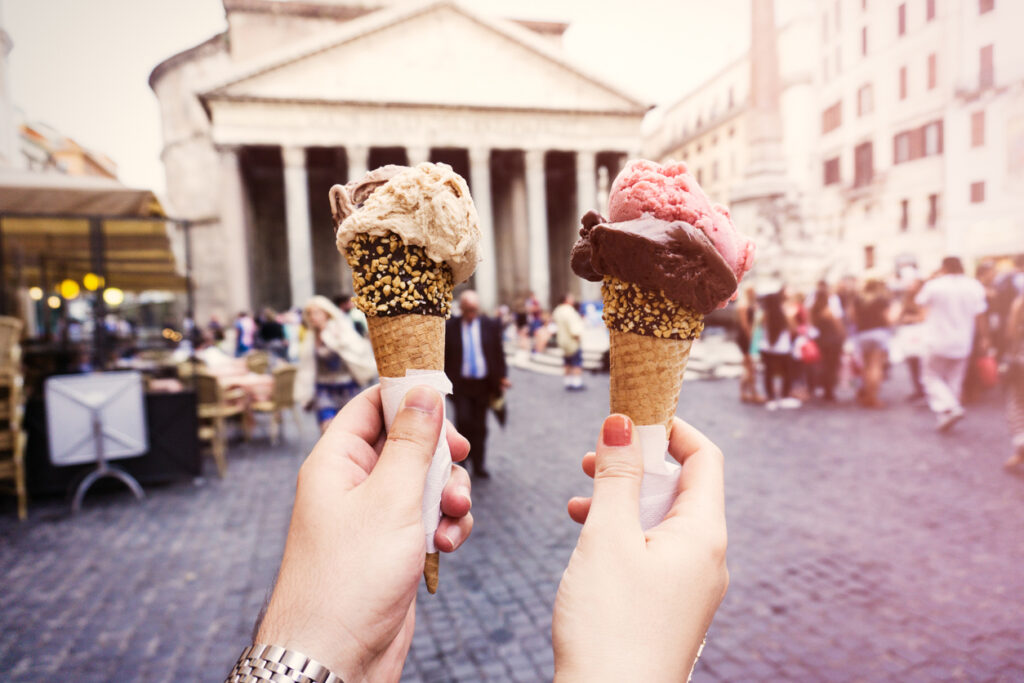
Picture Credit: Burakka Rademir.
7. Be Festival-Ready
Summer in Italy means festivals galore—from religious processions to open-air concerts and medieval reenactments.
Notable Events:
- Festa di San Giovanni (June 24): Celebrated in Florence and Genoa with fireworks and parades.
- Palio di Siena (July 2 and August 16): A thrilling horse race in Siena’s main square.
- La Notte Rosa (early July): Italy’s “Pink Night,” a coast-wide celebration with music and parties on the Adriatic.
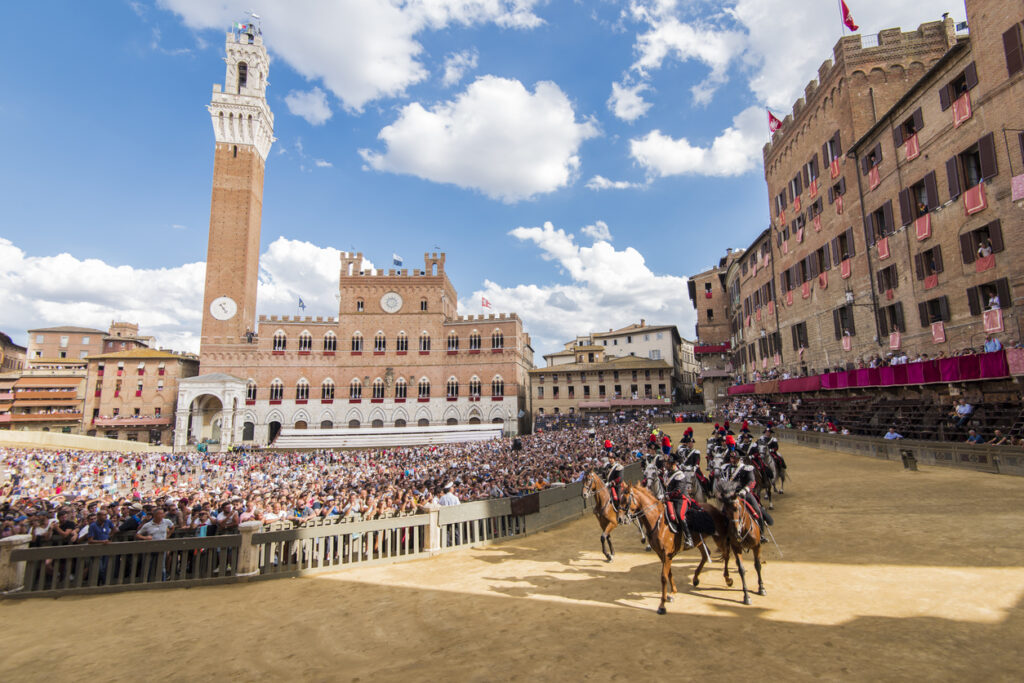
Picture Credit: Mauro Repossini.
Pro Tip:
Check local calendars before you go—these events can affect transportation and accommodation prices.
8. Use Technology to Your Advantage
A few apps and tools can make your summer trip to Italy smoother:
- Google Maps or Citymapper for navigation.
- Trenitalia or Italo apps for train schedules and booking.
- TheFork for restaurant reservations.
- Duolingo or Google Translate to brush up on Italian or translate on the go.
9. Stay Safe and Informed
Italy is generally safe for travelers, but keep a few things in mind:
- Pickpockets: Especially in tourist-heavy areas like Rome, Venice and Naples. Use a money belt or anti-theft backpack.
- Heat Safety: Don’t underestimate the effects of the sun—carry sunscreen and take breaks.
- Local Laws: Avoid swimming in unauthorized areas or climbing historic structures—fines can be steep.
10. Pack Smart
Pack light but strategically for a summer trip:
- Breathable clothes, walking shoes, and a light jacket for cooler evenings.
- A portable fan or cooling towel.
- Copies of your ID and travel insurance.
- A power adapter.
Final Thoughts
Traveling to Italy in the summer is a vibrant, unforgettable experience, filled with stunning sights, cultural richness, and culinary delights. With careful planning, a bit of flexibility, and an adventurous spirit, you can beat the crowds, stay cool, and discover the many layers of this beautiful country.
Whether you’re marveling at Michelangelo’s David, sipping a spritz in Venice, or swimming in the crystalline waters off Sardinia, Italy in the summer has something for every traveler.
Buon Viaggio!

What to Pack for Italy
Cosa Mettere in Valigia per l'Italia
Everyone is always asking me what they should pack for Italy,
so I’ve created a quick reference guide that you can use for your next trip.
Hint: You don’t need nearly as much as you think you do!

Leave a Reply